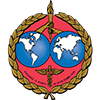
Editorial
Training the Next Generation
 SICOT Active Member - Harlow, United Kingdom |
At a recent ceremony for the presentation of Diplomates at the Royal College of Surgeons of England, Prof Michael La Quaglia was granted Admission to the Honorary Fellowship of the College. Prof Michael La Quaglia is a Paediatric Surgical Oncologist, working at the world-renowned Memorial Sloan Kettering Cancer Hospital in New York. The first line of his citation read as “Michael La Quaglia is a gifted technical surgeon, a compassionate physician and an inspirational mentor (but only an average marathon runner!)”. To me “the inspirational mentor” struck a chord. His acceptance speech left a lasting impression on the audience. He wanted the next generation of surgeons to engage and seize opportunities, be innovative and lifelong learners. He could not emphasise enough though the importance of family life and work balance. These are life experiences and pieces of advice coming from a master.
I was quizzed recently as to my most treasured memory as a trainee and which trainer or trainers left their lasting mark. As I tried to gather my thoughts and move back in time, I was left to ponder over what sort of impression I left/leave as a trainer for my trainees? Am I doing my best in fulfilling my responsibilities? It is easy to forget that “Doctor” in Latin “Docere” is ‘to teach’! I was fortunate to be trained by some phenomenal trainers and key opinion leaders. Some of them certainly left a lasting impression. Abraham Maslow proposed a theory on motivation and developed a hierarchy of needs model (Figure 1). Basic needs in terms of education will have to be fulfilled first. Otherwise, the foundation of the pyramid will be affected. This brought back not so pleasant experiences during my own training. Noticing my unhappy demeanour, my mentor who was a senior surgeon pulled me aside and asked me to visualise my experience as a “Tour of Duty”. He was referring to the armed services compulsory duty that the American citizens had to perform during the war in Vietnam. He wanted to harness my unpleasant period as a learning experience. Vygotsky’s model on ‘the zone of proximal development’ (Figure 2) provided me with insight into pushing the boundaries of a trainee’s knowledge with engagement. This was certainly what my phenomenal trainers did subconsciously, pushing me beyond my comfort zone but in a pleasant way in order to reach “Self Actualisation”, the apex of Maslow’s pyramid. They wanted me to think like a consultant and a leader, even when I was a trainee. One of them casually mentioned of his reasoning behind this constant push of intellectual stimulation and hard work: “I want you to be better than me!”, he said. In a similar way, Sir Trevor Soar, a former Commander-in-chief of the Royal Navy, said: “People need to think like a Captain even if they are a young Sailor”.
It is not easy to be a trainer. For some this comes naturally but for others it is hard work. What is important is the need for trainers to understand trainees and their individual needs. This is indeed a challenge as it varies from trainee to trainee. Various methods have been described which trainers use. While most are fairly comfortable with a Didactic (the mainstay to provide theoretical knowledge) or a Socratic approach (the oldest and powerful way of fostering critical thinking by questioning), one needs to be more flexible introducing other approaches such as the Heuristic (method of discovery) or Counselling (feeling) approaches. The last two are underutilised. Dr Michael La Quaglia talks about the need to have humility (for trainers). This transcends into the ability to understand people (trainees) and problems. Sir Trevor Soar’s leadership skill set includes humanity. He says “We have to be able to understand peoples’ emotions, aspirations and perceptions, even if you do not agree with them. Understand what matters to people and listen to them. Not many people listen.” This statement is without doubt applicable to all trainers and current trainees who will go on to be the next generation of trainers.
To be a trainer is a privilege indeed. We have the opportunity to train the next generation of Orthopaedic Surgeons. Working practices have changed. We are governed even more by protocols, pathways and regulations. These are challenging scenarios putting service obligations at the heart of our duties. Very senior surgeons, mentors, trainers do feel the changing landscape is “not for me”. It may seem a selfish motive but I personally feel the need to invest in the next generation regardless of the challenges faced. This concept of investment is highlighted in Lave & Wengers’ “Communities of Practice”. It is a joint enterprise through apprenticeship with engagement in a meaningful activity – Training the Orthopaedic Surgeons of the future. After all, they need to slip into my “shoes’’ when I do hang mine up and of course be better than me (not that mine are big!).

Figure 1 - Abraham Maslow’s Hierarchy of needs

Figure 2 - Vygotsy’s theory of the Zone of Proximal Development

















